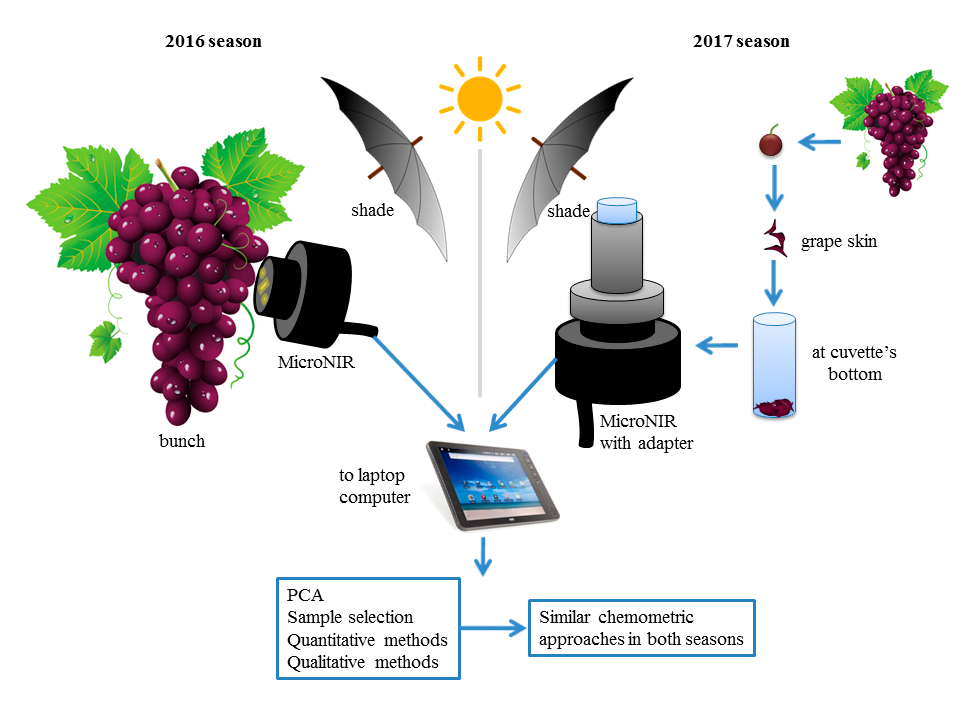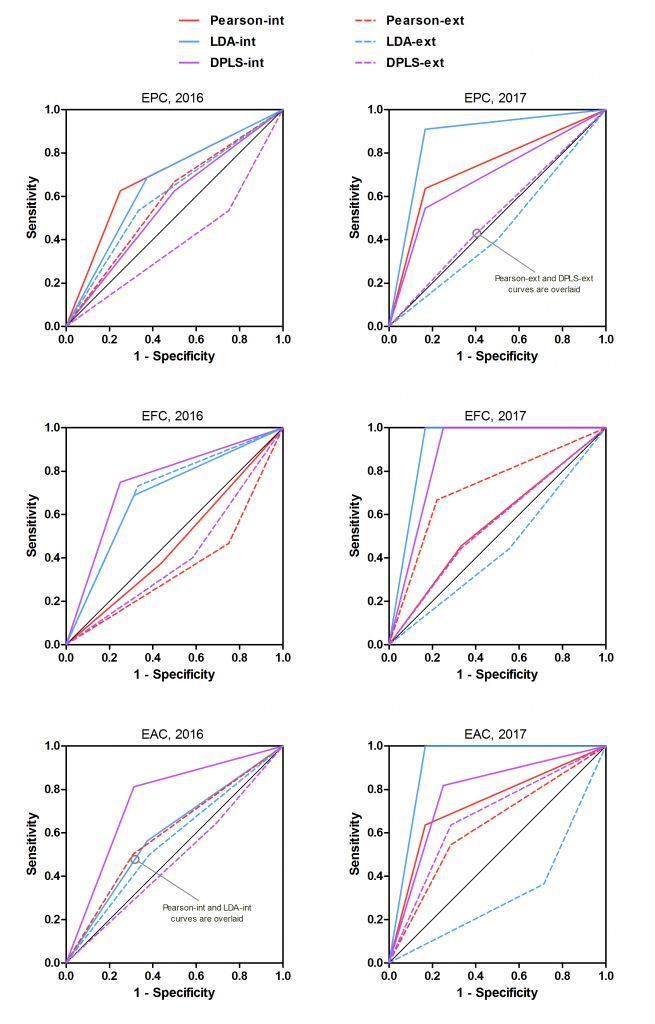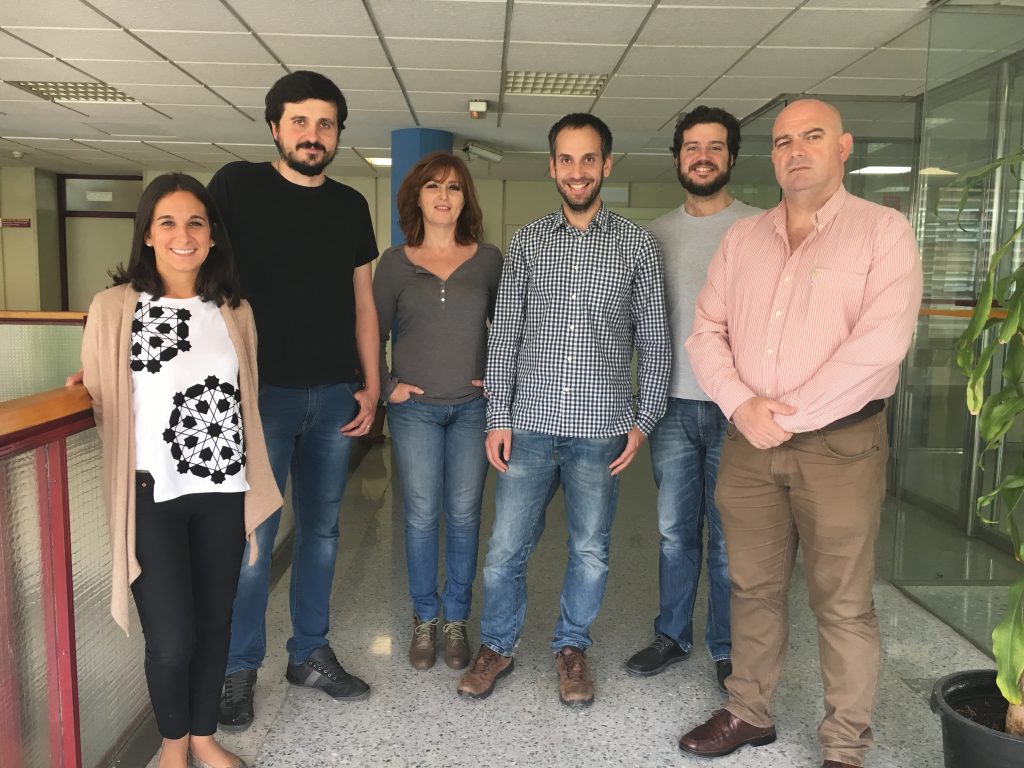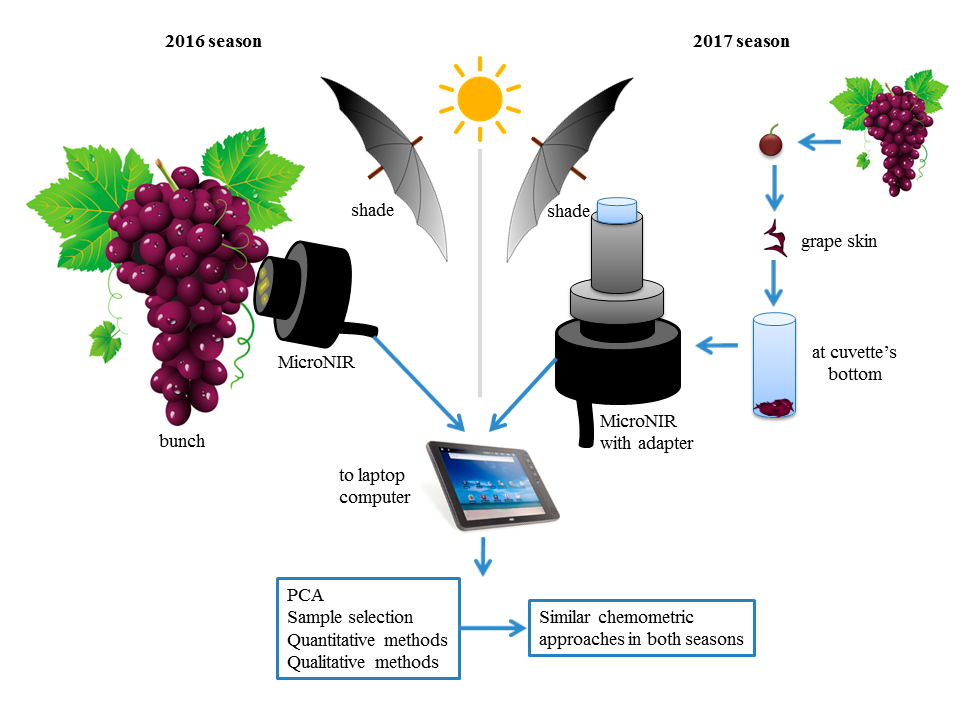By Berta Baca-Bocanegra, José Miguel Hernández-Hierro, Francisco José Heredia, Julio Nogales-Bueno
Phenolic compounds are secondary metabolites that not only have well-known health benefits but also add several sensory characteristics to wine. Red grapes (Vitis vinifera L.) contain about four grams of phenolic material per kilo. Most of them are found in berry solid parts and are transferred to the wine during the fermentation stage. Consequently, two important topics in oenology research have typically been the study of phenolic compounds present in grape solid parts and how well these compounds are transferred to wine (Ribéreau-Gayon, et al., 2006; Waterhouse, 2002). Among other techniques, near infrared (NIR) spectroscopy has been applied to study these topics.
A brief bibliographic review can show the strong evolution suffered by NIR spectroscopy during the last decades. A number of important oenological parameters, such as total soluble solids, pH, phenolic compounds (phenolic acids, flavanols, flavonols or anthocyanins), variety, geographical origin, etc., have been determined using traditional NIR spectroscopy (Cozzolino, et al., 2004; Ferrer-Gallego, Hernández-Hierro, Rivas-Gonzalo, & Escribano-Bailón, 2011; Herrera, Guesalaga, & Agosin, 2003). In a further step, NIR hyperspectral imaging added spatial information of the samples to the NIR spectrum and new and more suitable methods could be developed (Baca-Bocanegra, et al., 2016; Nogales-Bueno, et al., 2016). Among these studies, NIR hyperspectral imaging has been used to develop screening methods to measure extractable phenols in grapes (Nogales-Bueno, Baca-Bocanegra, Rodríguez-Pulido, Heredia, & Hernández-Hierro, 2015). However, despite the fairly good results obtained by NIR spectroscopy in the prediction of different parameters in the wine sector, most of these studies are carried out in the laboratory and involve the transport of samples. To solve this problem, interest has shifted toward the development of portable vis/NIR systems using Linear Variable Filter (LVF). This filter is an important innovation in optical system design and miniaturization due to the fact that it does not need any external components because all the needed parts are incorporated into its design. This kind of device might allow acquiring NIR spectra in vineyards, directly on-the-vine. Although limited information is still available with regards to this technology on the enology sector, their use could be significantly hindered by the varying conditions of field measurements.
In this work, a feasibility study on the use of a portable micro NIR spectroscopy device for the “in vineyard” screening of extractable total phenolic content, extractable flavanol content and extractable anthocyanin content (EPC, EFC, EAC) in red grape skins has been developed. For that purpose, quantitative (PLS) and qualitative (LDA, DPLS and Pearson’s similarity index) approaches were applied to two different sets of grape samples.
Grape spectra collection was carried out in two different seasons and following two different methodologies for the spectra acquisition (Figure 1). These methodologies were designed in order to optimize the procedure for “in vineyard” grape spectra acquisition (Baca-Bocanegra, Hernández-Hierro, Nogales-Bueno, & Heredia, 2019). Briefly, in 2016 season, grape spectra were collected directly on the bunch while in 2017 season, the engaging grapes were picked from the bunch and, just after that, grape skins were manually separated from the whole grapes and placed at the bottom of quartz cuvettes to collect the spectra.

For both seasons, quantitative calibrations produced higher errors than those obtained in our previous study developed using a bench top hyperspectral system (Nogales-Bueno, et al., 2015) but in accordance with the high errors previously obtained by Guidetti, Beghi, and Bodria (2010) for the estimation of extractable anthocyanins and polyphenols in grapes using a portable device. With regard to the aforesaid hyperspectral imaging study, similar InGaAs sensor was used for predicting the same reference parameters in similar samples and applying similar chemometrics. Therefore, it is proven that the measurement of whole grapes or grape skins in field with the MicroNIR system is not as efficient as the in-lab hyperspectral methodology applied in our previous study.
Moreover, qualitative analyses (LDA, DPLS and Pearson’s similarity index) produced high errors in the classification of samples with low or high extractable polyphenols contents. A comparative between the generated models is shown in Figure 2.

Receiver operating characteristic (ROC) curves shows that the measurement of grape skin in quartz cuvettes, carried out in 2017 season, resulted in a slight improvement in the percentages of samples correctly classified according their EPC, EFC and EAC levels, although they were not good enough for considering them useful models.
Therefore, the procedure reported here does not present enough accuracy for the “in vineyard” screening of extractable polyphenols in red grape skins. Although the aforesaid device has been developed for its use out of lab, vineyard environmental conditions might play a critical role on its use. Furthermore, heterogeneity of analyzed grapes and the own features of the berries (size, geometry or skin grape thickness) may also have influence on the obtained data and especial attention should be paid in further studies.

This work has been carried out by the “Food Colour and Quality” research group (Universidad de Sevilla, Spain). This group investigates on different areas related to the quality of food and the control of the production. Among these research areas, we can highlight the development and application of rapid quality control methodologies, especially Tristimulus Colorimetry, and the relationships between colour, chemical composition and visual assessment of several food products such as wines and grapes, citric juices, red fruits, olive oil, honey, etc. Within this research group, the spectroscopy section develops different studies for the control of food quality by means of several spectral tools. From left to right: Berta Baca Bocanegra, Julio Nogales Bueno, María Lourdes González-Miret Martín, José Miguel Hernández Hierro, Francisco José Rodríguez Pulido and Francisco José Heredia Mira.
References:
- Baca-Bocanegra, B., Hernández-Hierro, J. M., Nogales-Bueno, J., & Heredia, F. J. (2019). Feasibility study on the use of a portable micro near infrared spectroscopy device for the “in vineyard” screening of extractable polyphenols in red grape skins. Talanta, 192, 353-359.
- Baca-Bocanegra, B., Nogales-Bueno, J., Rodríguez-Pulido, F., González-Miret, M., Hernández-Hierro, J., & Heredia, F. (2016). Near infrared hyperspectral imaging: recent applications in the oenological and viticultural sectors. NIR news, 27(6), 14-18.
- Cozzolino, D., Kwiatkowski, M. J., Parker, M., Cynkar, W. U., Dambergs, R. G., Gishen, M., & Herderich, M. J. (2004). Prediction of phenolic compounds in red wine fermentations by visible and near infrared spectroscopy. Analytica Chimica Acta, 513(1), 73-80.
- Ferrer-Gallego, R., Hernández-Hierro, J. M., Rivas-Gonzalo, J. C., & Escribano-Bailón, M. T. (2011). Determination of phenolic compounds of grape skins during ripening by NIR spectroscopy. Lwt-Food Science and Technology, 44(4), 847-853.
- Guidetti, R., Beghi, R., & Bodria, L. (2010). Evaluation of grape quality parameters by a simple VIS/NIR system. Transactions of the ASABE, 53(2), 477-484.
- Herrera, J., Guesalaga, A., & Agosin, E. (2003). Shortwave-near infrared spectroscopy for non-destructive determination of maturity of wine grapes. Measurement Science and Technology, 14(5), 689-697.
- Nogales-Bueno, J., Baca-Bocanegra, B., Rodríguez-Pulido, F. J., Heredia, F. J., & Hernández-Hierro, J. M. (2015). Use of near infrared hyperspectral tools for the screening of extractable polyphenols in red grape skins. Food Chemistry, 172, 559-564.
- Nogales-Bueno, J., Rodríguez-Pulido, F. J., Baca-Bocanegra, B., González-Miret, M. L., Heredia, F. J., & Hernández-Hierro, J. M. (2016). Hyperspectral Imaging – A Novel Green Chemistry Technology for the Oenological and Viticultural Sectors. In P. Gorawala & S. Mandhatri (Eds.), Agricultural Research Updates, vol. 12 (pp. 45-56 ). New York: Nova Science Publishers, Inc.
- Ribéreau-Gayon, P., Dubourdieu, D., Doneche, B., Lonvaud, A., Glories, Y., Maujean, A., & Branco, J. M. (2006). Handbook of Enology, The Microbiology of Wine and Vinifications West Sussex, England: J. Wiley & Sons.
- Waterhouse, A. L. (2002). Wine phenolics New York, New york: The New York Academy of Sciences.

